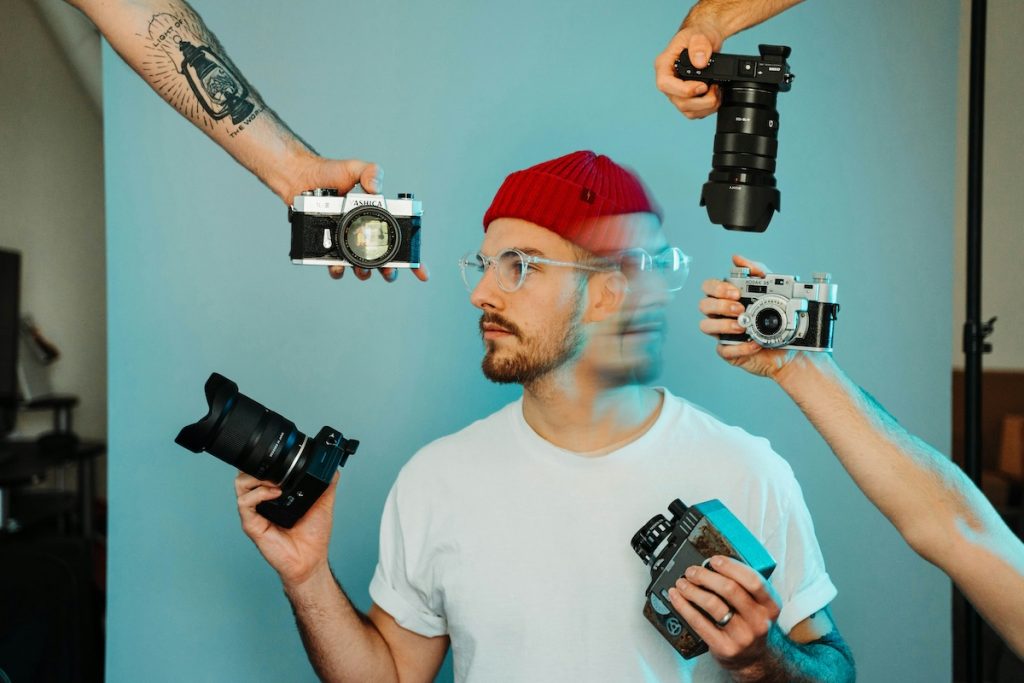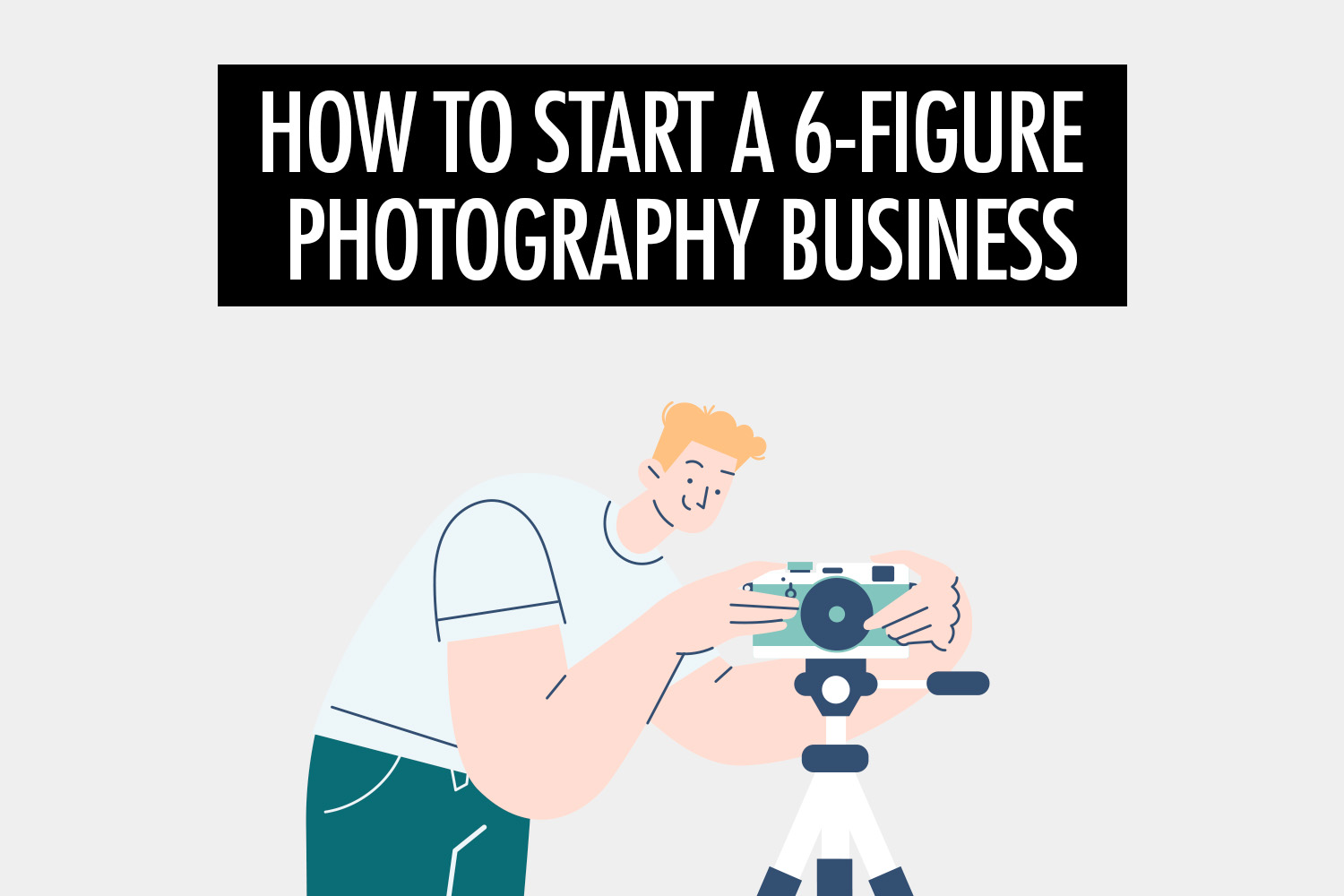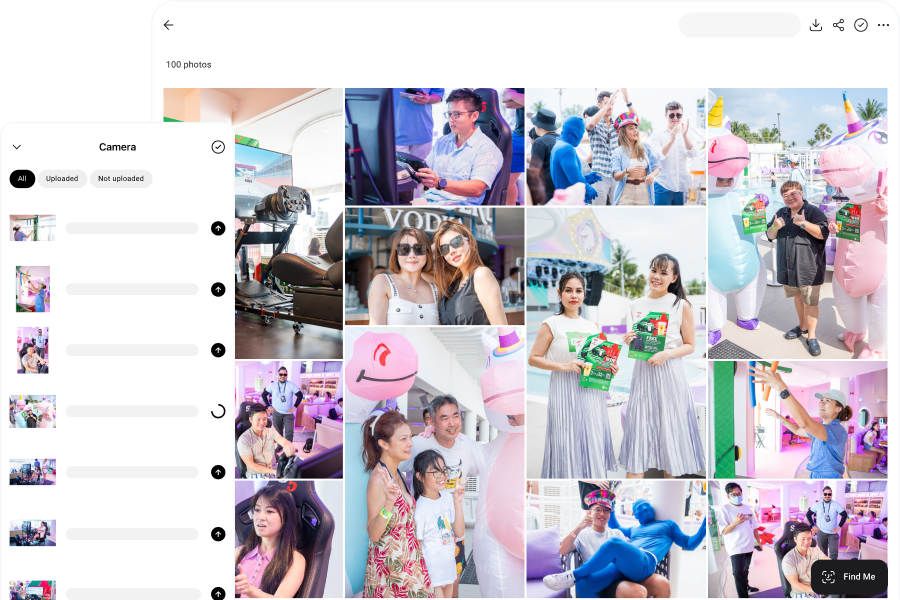At some point, every professional photographer has had to ask themselves this question.
Do I want to turn this hobby into a photography business?
You’re probably considering this question yourself, which is why you’re reading this.
The truth is, most photographers don’t realize that running a photography business is 80% business and 20% photography.
That’s why it’s called a business, not a hobby.
I’ve been running my own photography business since 2016. During that time, I’ve built 2 separate 6-figure businesses—first in Singapore, then in Thailand.
These are companies that are highly profitable, with satisfied clients and employees.
And they have helped me to gain my financial freedom.
In this article, I’m going to share all my hard-earned knowledge about starting up.
Some of them were things that I did in the beginning that contributed to my success.
Some of them are things I wish I knew back then, knowing what I know now.
All in all, it’s 8 years of experience, compressed into a single article.
This knowledge will be the difference between your success and failure, as you embark on your journey as a professional photographer.
Offer Your Minimum Viable Product
There’s a concept called the minimum viable product (MVP), which is usually applied to software startups.
The idea is to minimize risk when you want to start a new company.
Instead of building a full software product—which is costly in terms of time and money—you build the simplest possible version of the product that’s still functional.
That simplest possible version, called the MVP, allows you to start talking to your customers as early as possible. Depending on the feedback, you can then decide to further commit, pivot (by changing your direction), or give up—without sinking too much of your resources.
I sincerely believe that this is a very powerful concept that should be applied to all businesses, not just software.
Hence, when you’re just starting out your photography business, think about what you can offer as your MVP—before you rush to quit your day job.
This is usually a much simpler process than for software startups, because you don’t have to build a product.
All you need to do is package up your services, which you can try to sell as early as possible.
That way, you can get important feedback from the market—in terms of your ideal target segment, the demand for your services, the appetite for your prices, and so on.
So often, having an MVP allowed me to find out that my initial assumptions were wrong.
For example, we tried to sell our photography services to a certain segment of event planners—people who were planning birthday parties.
What we quickly learned was that this segment was very price sensitive. They just wanted the job done at a low price.
Since our pricing was beyond their acceptable range, we knew we had to adjust. Ultimately, we decided to create a simple low-cost package to address just this segment of customers.
That’s the value of the MVP. It helps you get out there and ask the market what it wants.
Find Your Niche

There are many fields of photography, and it’s important to focus on just 1 or 2 at the beginning.
That’s because photography isn’t a one-size-fits-all profession. The skills required to be a successful commercial photographer doesn’t translate to sports photography, and vice versa.
Neither does building a reputation in a niche lead to bookings in a different niche, unless they’re closely related.
For example, a reputation as a wedding photographer can lead to corporate bookings, so many photographers do both.
Different photography niches require different shooting styles, equipment and proficiencies. You need to determine which niche suits you, in terms of your skills, personality and aspirations.
If you’re going to be a portrait photographer, you need a basic understanding of lighting to work in the studio and produce consistent images.
You also need to be socially engaging—80% of a portrait shoot is about connecting with your subject.
Event photographers often work indoors or at night. So you need to be familiar with your on-camera flash, and understand how to bounce the light off different surfaces.
More importantly, you’ll learn to shoot quickly to capture fleeting moments and emotions. Like wedding photography, there is no chance for a reshoot.
On a personal level, you’re going to be losing many weekends if you shoot events and weddings. That can be fine or an absolute no-go, depending on where you’re at in life.
Product photographers have an advanced understanding of lighting and reflections—which can get technical. The editing process can also get very involved, compared to other niches.
Some fields require great social skills, while others let you work in the studio on technical puzzles.
Before you start a photography business, you need to understand your strengths.
Maybe you’re an outgoing person who loves interacting with people. Lean into that and pick a relevant niche.
Or maybe you love the technical aspects of lighting and have an eye for styling a shoot. Choose accordingly.
Do Your Market Research
Now that you’ve decided on your photography niche, it’s time to do your market research.
Don’t skip this step.
So often, just a little market research can save you so much trouble down the road.
It can help you avoid tarpits—which are ideas that seem great at first, but end up being a major drain on your time and resources.
Some simple things to look out for are the size of the market, the number of players and the prices they charge.
You want to enter large, healthy markets that are growing. You do not want to enter small markets that are shrinking.
Many large markets are crowded, because the money is there and it attracts many players. It’s not a bad thing.
In fact, I love crowded markets because they are a sign of healthy demand.
For example, e-commerce is growing by 10% or more, year-on-year.
Every online shop needs photos, so there’s a massive opportunity for product and fashion photographers—especially those that can work with a quick turnaround time and at scale.
On the other hand, small markets scare me.
It’s a sign that the demand is low or the barriers to entry are high. For example, certain markets have gatekeepers—you need to know the right people to get the job.
It’s great if you’re an insider, not so great if you’re a newcomer.
As another example, there are fewer and fewer jobs for photojournalists, as the economics of that market have changed.
Unless you love the struggle, it’s not a great time to enter that market.
Determine Your Ideal Client

If you have done your homework in finding your niche and researching your market, you should now be in a good position to identify your ideal clients.
These are the people you would love to work with, perhaps because they can give you recurring assignments, pay a decent amount of money or work on projects you’re interested in.
You need to have a clear understanding of who your ideal clients are, so that you know who to market to—we’ll talk about the different marketing channels later on.
It also helps you identify any weaknesses in your business plan.
If you’ve identified your ideal clients and realized that there just aren’t many of them in your area, that’s a sign that you might need to change direction or expand your services.
Let’s run through an example.
Say you’re an event photographer and you want to break into the industry. Who are your ideal clients?
Obviously, there are the event planners, and there are usually many of them in any major city.
Event planners can specialize in different types of events. There are planners for private events—like anniversaries and birthdays. On the other hand, larger event companies will handle the bigger brands and events—like multi-day conferences and multi-city roadshows.
Apart from event planners, venues can be a great source of bookings. These can be your hotels, restaurants and exhibition centers.
Many organizations hold recurring events and they do the planning themselves. For example, schools will usually have multiple events in a year—such as graduation parties. Since they tend to work with tighter budgets, they often plan these events themselves.
Is the events industry healthy in your city? Are there many potential ideal clients that you can work with?
These are all questions you want to consider.
Set Your Price
Many photographers struggle with pricing because it seems so subjective. There are no published guidelines and anyone is free to set any price, which just adds to the confusion.
I’ve written a detailed guide about pricing your services. While it was written for event photographers, the basic principles apply for any photography niche.
I recommend reading the full article, because it gives a clear step-by-step guide on how to work out the pricing that is right for you, at the stage you’re at in your career.
Here’s a quick summary of the steps.
- Research your competition: You want to know what your competitors are charging, because photography is a local service. That means that your prices have to be in line with other photographers, unless you have a compelling reason to charge much higher prices.
- Understand your positioning: Understand if you’re positioning yourself at the low, mid or high range. Different pricing strategies require different value propositions to succeed.
- Simplify your pricing: Make your pricing easy to understand. Often, simplicity allows you to close your deals more quickly, by reducing the back-and-forth questions on price—so that you can focus your clients’ attention on the value you provide.
- Value-added services: Upsell your clients by packaging value-added services. You make more money and provide more value at the same time.
There are also different psychological pricing tactics—such as ending your prices in 9 or 0—that I go through in the article.
Build Your Portfolio
Whether you’re starting a photography business or just looking for work as a second shooter, you need a portfolio.
That’s why it’s important to offer a minimum viable product (MVP) as soon as you can, so that you can start building your portfolio.
But it’s not just professional work—you can build a portfolio through personal projects.
Clients don’t care about photography degrees. They want to see that you’ve done interesting work.
If you’re struggling to find clients at the beginning, work on your personal projects to establish your unique vision and style. You don’t need someone to hire you to create interesting work.
For example, this photographer broke into the super exclusive niche of shooting movie posters through a personal project. According to him, there are about 4 photographers doing 90% of the movie posters, so he spent 3 months developing a unique project that got the attention of the right people in the industry.
If you’re doing different photography niches, make sure you create separate galleries for each niche. The last thing you want to do is to mix your real estate portfolio with your wedding portfolio.
Think about how visitors will flow through your website. When they land on your homepage, will they be directed to separate galleries based on their interest?
If your photography niches are very different from one another, you might want to consider creating different websites for each niche.
That’s because many clients want to hire photographers who they perceive as specialists in their particular niche.
For example, advertising agencies want to work with commercial photographers. They don’t want to work with someone who dabbles in commercial, real estate and wedding photography—even if the skills can translate across these niches.
Market Your Photography Business

Just because you start a business doesn’t mean that anyone is going to hear about it.
You can have the best service in the world, but that means nothing if you can’t get in front of your ideal clients.
Many photographers struggle with marketing, because that’s not where our skill sets lie. We’re great at taking beautiful photos, but not so great at telling other people about it.
The good news is that marketing is something you can learn, and there are many different channels that you can pick according to your strengths. Just doing well at 1 or 2 channels will set you up for financial success.
I’ve written a guide on growing your photography business, and talked about several marketing channels you can explore.
But the first and most important point is understanding how you differentiate yourself from your competitors.
In other words, why would a client choose you, instead of all the other photographers in your area?
For example, you can differentiate based on your visual style—perhaps you have a unique vision that makes your photos stand out.
Or you can differentiate based on the experience that you provide to your clients and guests. For wedding and event photographers, using Honcho lets them instantly share their photos with guests, via face recognition—leading to wow moments that clients are excited to pay more than double the usual price for.
Once you understand your unique value proposition, you’re ready to market yourself. Marketing is a huge topic on its own, so I’m just going to list out several options—some of which I’ve talked about in-depth.
- Run ads on Google.
- Cold email your ideal clients.
- Create valuable content and build an audience.
- Invest in SEO, so that your photography business shows up in Google search results.
- Have a strong social media presence.
- Network and form partnerships with non-competitors in your industry.
- List your services in directories and platforms like PartySlate.
- Get your work featured in industry publications.
Generate Leads at Every Event
When we first started shooting events and weddings, we would get leads once in a while at our events—but never at a volume that could grow our company.
Now, we generate 2-3 leads at every event that we shoot, and it’s the biggest source of growth for us.
This means that at every event, people are approaching us to get our business card—for their own weddings, events and portrait shoots.
For every event that we cover, we’re automatically generating more business in a virtuous cycle.
And it’s happening at no cost to us. It’s free.
What changed?
We discovered a simple and powerful secret, and it’s so simple that anyone can do it.
The secret is that people love seeing great photos of themselves in real time. It’s like magic happens and a switch flips in them.
The key is the timing. We’re talking about real time, not a few hours or a few days after the event.
Again, it has to be in real time.
It’s the difference between getting 2-3 leads per month, or getting 2-3 leads per event.
So how do we show people their photos in real time?
There are 3 ways that we do this:
- We instantly share the photos with the attendees right after we take them, via face recognition or QR code.
- We show the photos on a projector, with a live slideshow.
- We print the photos on-site, and give them to the attendees.
When we first started offering these features, we were doing it even when our clients didn’t ask for them.
Now, many clients come to us precisely because we offer these features. And we get to charge double or triple our usual rates.
So not only do we generate leads at every event, we charge higher for them.
How can you start offering these features?
You can do it the way we did in the beginning, by piecing together different software into a hacked together solution. I’ve talked about our previous workflow in this article.
Or you can do it the way we do now, with Honcho.
When we started building Honcho, we were only building it for ourselves. We just wanted to make our lives easier.
And we were using it ourselves for over a year without telling anyone. It was our secret weapon.
But after we saw the impact that it had on our photography business, we decided that we wanted to offer it to other photographers too—so that they could also grow their businesses the way we did.
We’re making sure to make it accessible to any photographer, whether you’re just starting out or you’re an established business.
You can sign up for the free tier and test the features right now. That allows you to get familiar with Honcho, so that you feel confident in offering it to your customers.
You only need to pay after you close a booking with Honcho, so there’s zero risk for you.
And if you close just a single booking with the extra features you can offer with Honcho, you will make enough to pay off a full year’s subscription.
Just one booking, and everything after that is pure profit.
Stop Obsessing About Gear

In the 8 years that we’ve been in business, I can count on one hand the number of times our clients have asked us about our equipment.
Clients don’t care if you’re using the latest and greatest camera model, or the most expensive studio lights.
They’re hiring you, the photographer. They’re not renting camera gear.
If you have a solid portfolio, they already know that you can get the results they want with the gear you have. Nothing else matters.
Of course, that also means that your equipment cannot be a hindrance to achieving the results you want.
For my own photography business, we buy used pro-level gear over new consumer-level gear. Most pro-level gear are built to last and can take a beating. You’d be surprised by the deals you can find in the used market.
Instead of thinking about gear, think about the work you want to create. Outside of paid work, explore personal projects to polish up your unique identity as a photographer.
Instead of watching YouTube videos about equipment, watch videos to educate yourself about the art and history of photography.
Instead of looking at photos on Instagram, look at photos by the masters of photography—photo books are a wonderful resource, and teach you more about visual style, sequencing and storytelling than any social media post.
Stop obsessing about gear. Obsess about photography instead.
Know Your Finances
A common mistake for many first-time business owners is lacking discipline in maintaining their accounts.
It happens to the best of us—I know from firsthand experience.
When you’re busy building your photography business, it feels like there are a thousand things you should be doing to grow your business—marketing, sales, networking and doing the actual photography work.
All that boring accounting stuff gets pushed to the bottom.
That is, until you check your bank balance one day and realize there’s not enough cash to last you through the month. Then the fight-or-flight response kicks in and you scramble to figure out what went wrong.
Rinse and repeat, and you go through periods of feast or famine. In good times, your bank account swells and you decide to spend on things that you justify as investments—like the latest camera gear—but don’t really make a difference to your photography business.
You don’t want the stress of that cycle.
Remember, money is the lifeblood of any business. When you run out of money, your business closes down.
Regardless of your reasons for owning a business, money is the only thing that matters when it comes to surviving—or flourishing.
So you need to be educated about money and understand how it flows through your photography business.
Track your revenues and expenses with an accounting software—there are many designed for small businesses that don’t cost much.
Understand that profit is not equals to cash flow, and it’s possible to have a profitable business that has no money to keep the lights on.
Know your basic financial reports—like your balance sheet, profit and loss and cash flow statements.
A photography business is a business first and foremost, so you need to know your finances.
Build Your Photography Brand

When we think about branding, we naturally think of the logo. But while the logo is important, a brand’s identity extends beyond that.
It’s what we do that gives meaning to a brand, and not the other way around.
That means that every touchpoint in your business contributes to and reinforces your brand—from your emails to the way you present yourself at the shoot.
It can feel overwhelming, but remember that brands are not built overnight.
You build a brand in the same way you’d build a house—brick by brick.
If you need some ideas to get started, try our free AI-powered photography business name and logo generator.
Let’s break down the most important elements to think about when you’re just starting your photography business.
Name
Do you want to associate your own name with the photography business, or do you want to develop a brand that’s independent from you?
There are pros and cons to each approach.
Associating your own name allows you to build a personal brand and become the face of the company—it’s often easier to build trust in a person rather than a faceless company.
However, once you’re the face of the company, clients will come to expect to work with you. After all, it’s your name on the building.
It’s a letdown if you hand your clients off to your employees instead, regardless of how talented they might be.
Hence, building a brand that’s independent from you can allow you to take a more hands off role in the future—so you can focus on building the business, instead of working in the business.
Visual Identity
The visual identity is more than just your logo.
It includes the fonts you use across your website, brochures and documentation.
It includes the look and feel of your website, the design of your social media posts, your business cards, and so on.
Again, you don’t have to define your full visual identity at the get go. Creating a cohesive logo and identity often requires a professional designer, you should be focused on getting your first bookings.
Fortunately, we have many resources to make a presentable visual identity, without investing too much time or money.
When creating your website, choose one of the many available templates—whether you’re using WordPress, Squarespace, Wix or any of the other website builders.
For social media posts, Canva offers many ready-made templates so you don’t have to do it from scratch in Photoshop.
Tone of Voice
Your brand’s tone of voice is the way you communicate with your audience and the impression you make on them.
Essentially, it’s not what you say, but how you say it.
You want a consistent and authentic tone that comes from who you are.
Maybe that’s a casual tone, because you prefer to keep things light hearted even when you’re working on a big project.
Or it could be a professional tone, because you believe in showing your confidence and competence.
Constantly switching up your tone leads to a jarring and confusing experience, like speaking to a person with multiple personalities.
Over time, this consistent tone helps you establish an emotional connection with your audience and stand out from the crowd.
Conclusion
Let’s not sugarcoat it—building a photography business is hard.
Heck, building any kind of business is hard, so know that you’re not alone.
But you already knew that, didn’t you?
So that’s not going to stop you, because you’re not here to do what’s easy.
You’re here to put in the work, be your own boss and gain your financial freedom.
I’ve given you my secrets for success, that has helped me build 2 separate 6-figure photography businesses.
I believe it can do the same for you.
But nothing is going to happen on its own, so it’s time to get out into the real world and start building something amazing.
See you on the other side.


